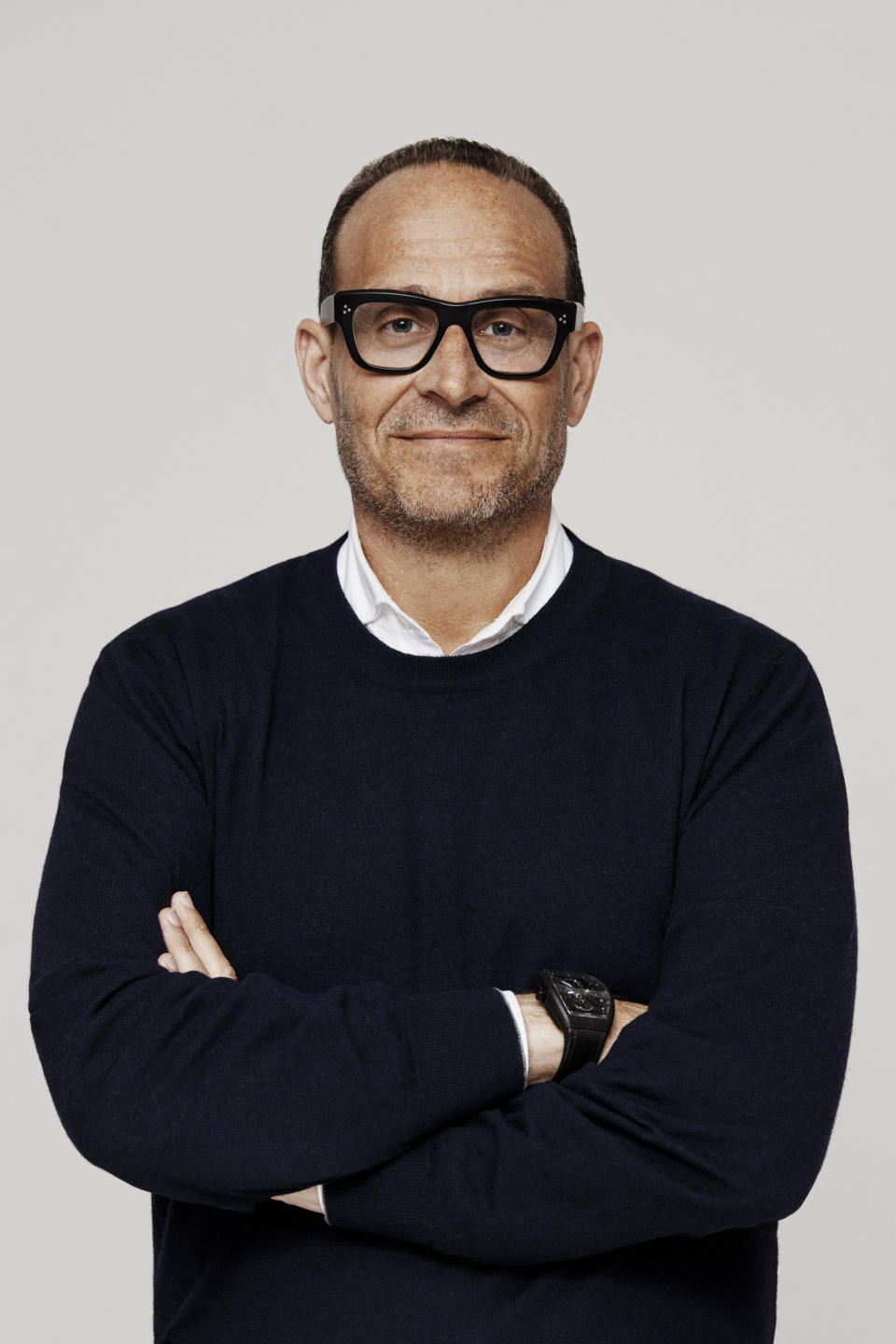Saks CEO to Vendors: Luxury Sales Stay Soft

Amid the volatile macroeconomic environment, luxury customers are becoming more “deliberate and value-focused” in their spending.
They’re also shifting discretionary dollars more toward wear-to-work clothes and fashion for dining out and parties, and pulling back spending on casual clothes, sneakers and handbags.
More from WWD
That’s the read on the luxury consumer from Marc Metric, chief executive officer of Saks, who on Wednesday issued his quarterly letter to vendors updating the business.
He said that Saks, the e-commerce operation of the Saks Fifth Avenue brand, saw an 8 percent slide in gross merchandise value in the first quarter ending April 29, though on a two-year stack, first quarter GMV was up 64 percent. (GMV refers to all the merchandise sold including owned goods, and those sold through leased shops, marketplace formats and drop shipping.)
At SFA, the company operating the Saks Fifth Avenue stores, GMV fell 15 percent in the first quarter, though Metrick indicated that GMV at the stores grew 23 percent compared to first quarter 2021. On a two-year stack, GMV for the SFA stores rose 8 percent, while profitability increased 20 percent, Metrick wrote.
GMV for the entire Saks ecosystem — stores and e-commerce — fell 13 percent in the first quarter, but was up 22 percent on a two-year stack, and 31 percent compared to pre-pandemic levels in first quarter 2019.
Saks and SFA Stores, which are two separate companies, do not publicly disclose dollar figures, just percentage change.
“What we want to emphasize is our two-year growth so people don’t think there’s a massive retreat” from luxury spending, Metrick told WWD. This year, “It’s a rebalancing of where people are spending their money,” Metrick observed.
The CEO also emphasized his company is agile and can weather the challenging macroeconomy. “We have a pretty good ability to navigate these environments. We’ve been through 9/11, the Great Recession and the pandemic….We’re staying close to the customer on our strategy.”
He said the company continues “on a path toward a lot more scale and efficiencies. We rationalized the employee base. There’s more efficiency coming out of our marketing spend, with less spending on [customer] acquisition and more on retention.” About 100 layoffs at Saks.com were reported last January.

Last year, “We were much more in a buildup mode” with the launch of two new fulfillment centers, Metrick said. This year, the company should begin seeing the fruits of those investments, he contended.
Metrick expects consumer spending to remain soft through the rest of the fiscal year. “The luxury consumer still has an appetite for luxury, but their spending is becoming more deliberate and value-focused,” he wrote.
“[Last quarter] the best-performing business on the website was women’s apparel. We’re seeing folks get dressed up again,” Metrick said in the interview. While wear-to-work clothes and fashions for going out for dinner and parties are selling, sales of casual clothes, bags and sneakers are starting to “recede a bit,” he said.
Traffic on the Saks.com site grew by 6 percent last quarter. “By design, new customer counts are down 25 percent compared to first quarter 2022, as we emphasize retaining customers at a higher rate, especially those with lifetime value. Total customers decreased by 6 percent for the quarter, yet are nearly 50 percent higher than when we launched Saks as a luxury e-commerce platform in March 2021,” Metrick wrote.
On the brick-and-mortar front, Saks Fifth Avenue has invested $52 million to open a 135,000-square-foot store on Wilshire Boulevard in Beverly Hills, on the site of a former Barneys store, in the first of week of October this year. The smaller Saks store being vacated on Wilshire will be redeveloped by the parent HBC. Recently, HBC raised $180 million in incremental liquidity to invest in stores.
As reported last week by WWD, the most recent Saks Luxury Pulse survey revealed a “deceleration” of luxury spending. Fifty-three percent of those surveyed said they would spend the same or more on luxury goods in the next three months, meaning that 47 percent of the luxury customers surveyed would spend less. In the prior Saks survey fielded last January, 62 percent said they would spend the same or more on luxury goods over a three-month period, meaning 38 percent would spend less. Saks’ Luxury Pulse is a quarterly online survey of luxury consumers’ attitudes toward shopping, spending and fashion trends. It is based on responses from 3,744 U.S.-based respondents over age 18 and was most recently fielded between April 28 and May 1.
Other strategies being advanced at Saks include personalization, AI, the Saks Live interactive live commerce platform, and the Fifth Avenue Club for personal shopping which is opening suites in resorts.
Best of WWD

